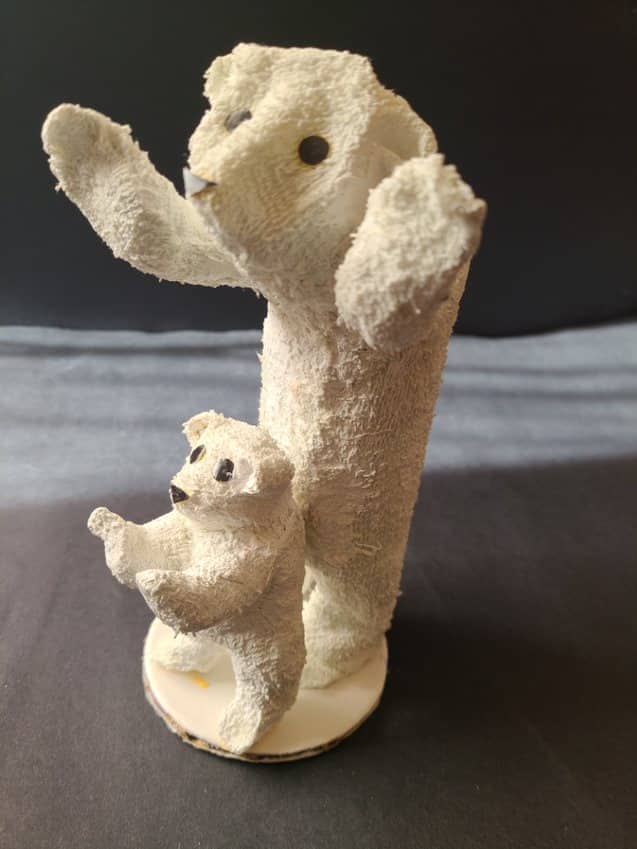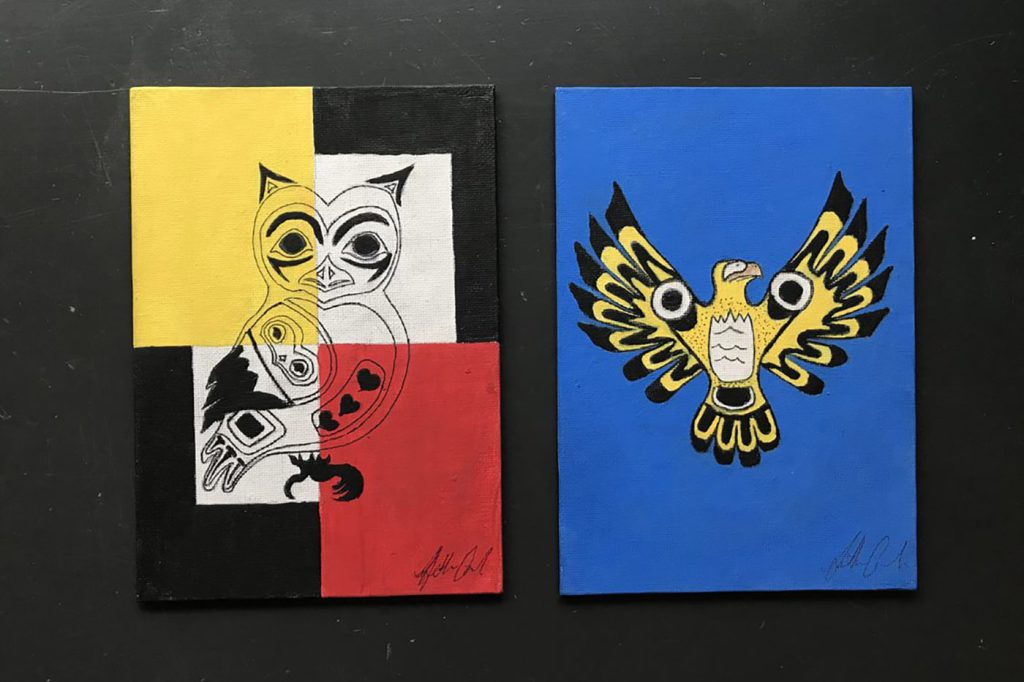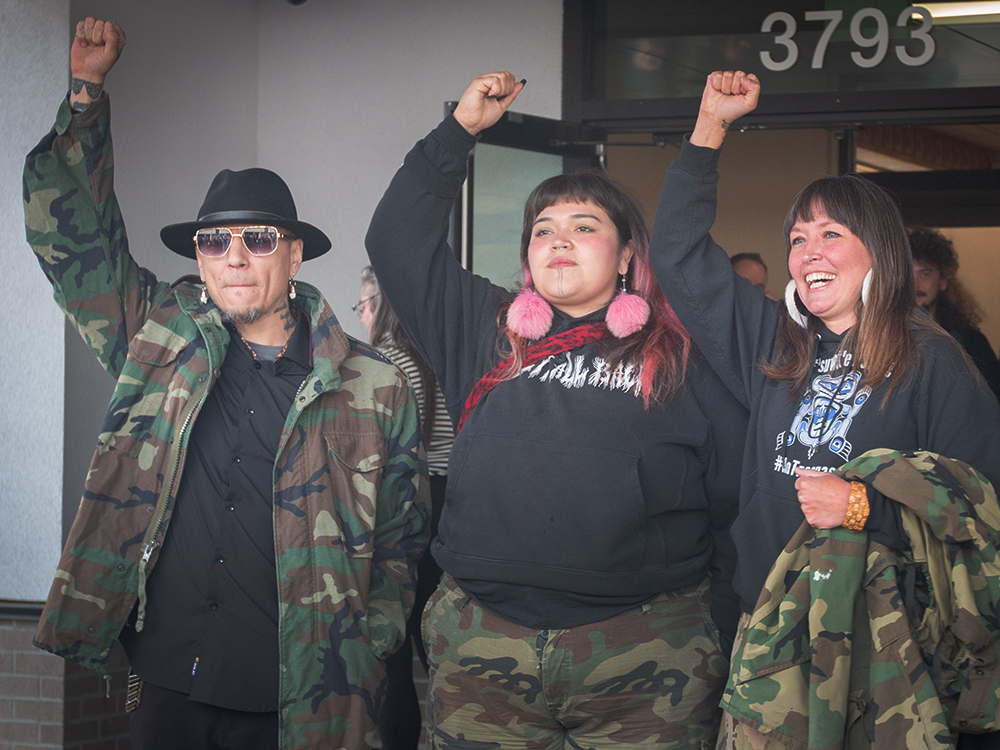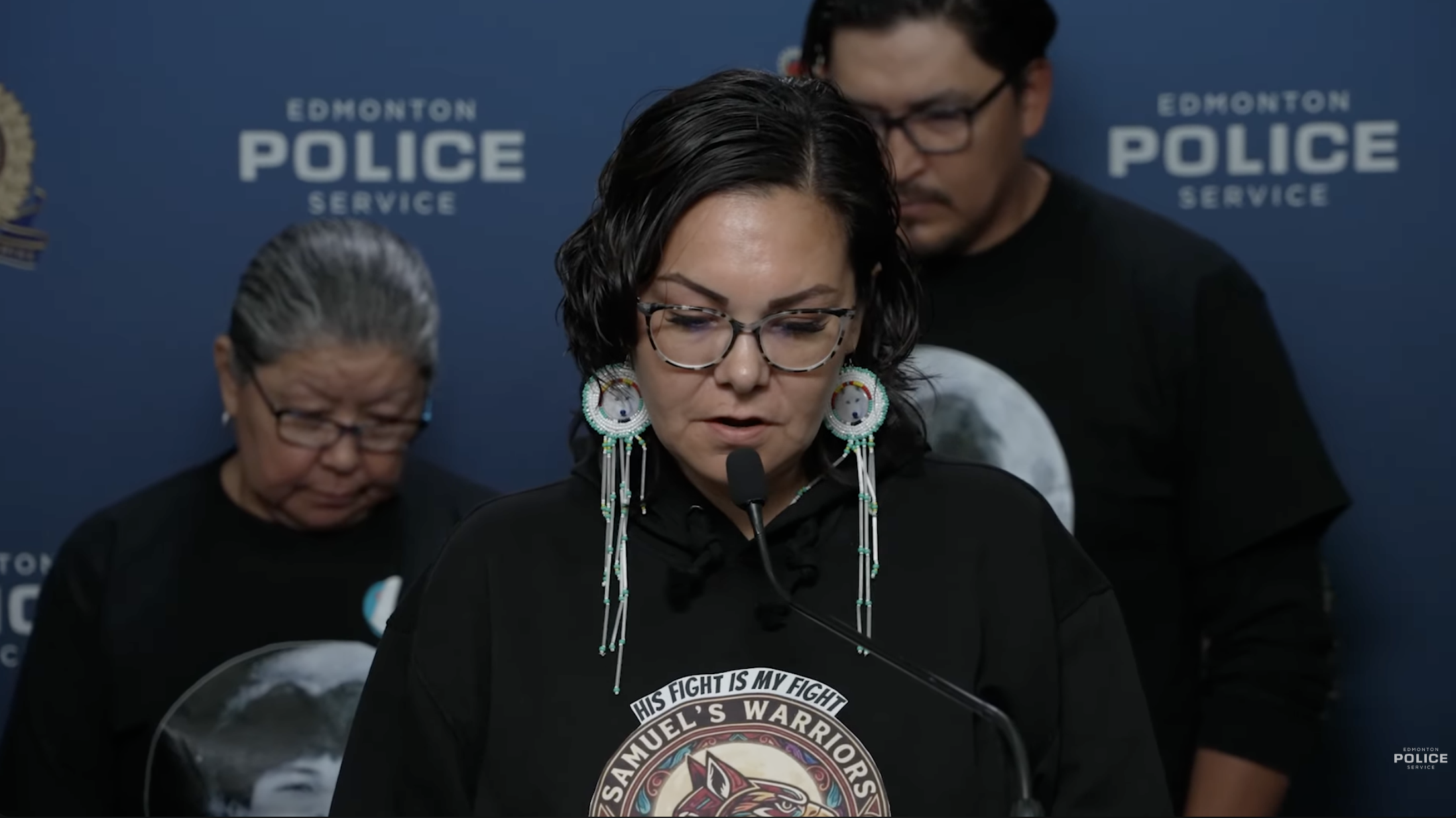Artwork from prisons gives glimpse into lives of incarcerated people: ‘we’re still human’
‘When you’re in an 8×10 cell you’re in your head a lot. When you can have a bit of an escape, it can pull you out of deep depression,’ says one creator in the ART & Justice exhibit


Trigger Warning: This article mentions details of being incarcerated. Please read with care.
After almost two years of waiting, a team at the University of British Columbia (UBC) has received hundreds of pieces of artwork, created by individuals incarcerated in federal prisons across “B.C.” and the “Yukon.” From paintings to poetry, each piece of art tells a story, and many were created by Indigenous artists.
Now, the doors are open at a gallery in the Downtown Eastside of “Vancouver” that’s showcasing these works of art.
Starting in 2020, 756 art and reciprocity kits were distributed to various institutions for the ART & Justice project, led by UBC school of nursing professor Dr. Helen Brown and interdisciplinary studies PhD candidate Kelsey Timler. The project was guided by Indigenous Elders and previously incarcerated activists, and it focused primarily on Indigenous people and people living with mental illness. Hundreds of sketches, paintings, carvings, poetry and more were sent back.

“There were really beautiful pieces, and words, and songs and stuff like that, that were expressed,” said Peter Fraser, who is of the Sḵwx̱wú7mesh, Snuneymuxw, Hesquiaht and Ehattesaht nations. Fraser is an advisor to the project as an Indigenous person who has been incarcerated.
“There were some very hopeful ones, some very beautiful expressions, some very talented people that really dove into the process and were able to share some really beautiful pieces.”
In the gallery, all artists who have work displayed in the show are credited as “Anonymous person in prison.”
“I’ve been learning to process through art. [I want people to know that] a strong, resilient, unbroken woman created this. Many times throughout this journey I’ve been almost broken. But I’ve never been broken,” said one artist in a quote provided by UBC.
While not all art in this project was created by Indigenous people, a large portion of it was. In an interview with IndigiNews, Peter spoke to the disproportionate number of Indigenous people incarcerated in Canada.
According to Statistics Canada and ‘Canada’s’ Department of Justice, Indigenous people represent a large portion of the inmate population in “Canada,” and numbers are increasing at a steady rate — 42.8 per cent compared to an overall population rate of 1 per cent. This data shows the disproportionate rate of incarceration of Indigenous people — an effect of the systemic discrimination, ongoing colonial policies and socio-economic marginalization of Indigenous people.
During his years behind bars, which ended in 2021, Fraser said he changed a lot. He learned to look for and appreciate the beautiful moments in life, the caring people around him, as well as the opportunities to express himself, such as through art and music.
In another anonymous quote from an ART & Justice creator, they shared: “When my father died, I locked all my emotion and creative expressions in a dark corner. I couldn’t get at it without pain. Your art kit kicked my ass into that ‘room.’ I have a life again, a possible release … My life was recharged and I’m able to talk/create freely without ‘damaged’ emotions.”

During COVID-19 many “correctional” institutions invoked strict isolation policies, meaning people inside were left locked in their cells for long periods of time. These have since been adjusted as the pandemic has continued, but those policies affected all incarcerated people — from those who had already been inside for a long time, to those who had just arrived, explained Peter.
“When you’re in an 8×10 cell you’re in your head a lot. When you can have a bit of an escape, it can pull you out of deep depression,” said another artist in a provided quote. “Especially with my poetry, it gave me an outlet to dig deep into my feelings.”
He sees ART & Justice as a way to not only support incarcerated people, but also people on the outside looking in. He believes it can help to humanize those behind bars, who are often experiencing mental health and addictions challenges. So often, he said, they are feared and reviled because of offenses they have committed in their past.
“So in this project, what I was … mostly focused on was the fact that regardless of an offense – which is real, I understand the harms of it – it seems to overshadow and lose sight of the fact that we’re still human,” Peter explained.
This project, he hopes, bridges that gap.
“Art is something I can put out there that’s going to be timeless, that will go on far after I’m gone. I want to be remembered by something that I did and shared with others. [My art] gives me insight into myself, who I am beyond my crime,” said an artist in a provided quote.
“[ART & Justice] was an opportunity to provide support to them in a way, to express themselves, to work, do art, help them with [the] worst isolation,” Peter added.
“And they did it in such a beautiful way, that kind of shared where they’re at, what kind of stuff they wanted to express; it was a beautiful opportunity.”
Editor’s note: IndigiNews has accepted anonymous quotes from incarcerated people who participated in the ART & Justice project through UBC, to protect their privacy.
Author
Latest Stories
-
‘Bring her home’: How Buffalo Woman was identified as Ashlee Shingoose
The Anishininew mother as been missing since 2022 — now, her family is one step closer to bringing her home as the Province of Manitoba vows to search for her
-
Land defenders who opposed CGL pipeline avoid jail time as judge acknowledges ‘legacy of colonization’
B.C. Supreme Court sentencing closes a chapter in years-long conflict in Wet’suwet’en territories that led to arrests
-
Samuel Bird’s remains found outside ‘Edmonton,’ man charged with murder
Officers say Bryan Farrell, 38, has been charged with second-degree murder and interfering with a body in relation to the teen’s death













